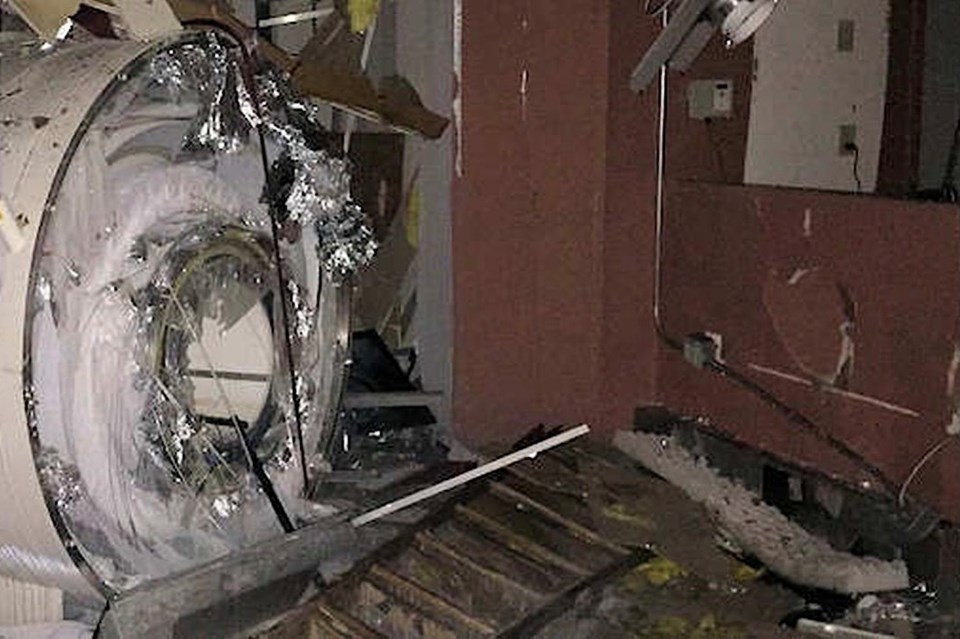When SooToday first reported last month that a video had surfaced showing the conditions inside Sault Ste. Marie's former General Hospital building, readers were quick to highlight what appeared to be an abandoned magnetic resonance imaging (MRI) scanner.
The device was discovered at the video's 13-minute mark by an urban explorer who mistakenly described it as a "CT scanner."
See: Decrepit Sault hospital site featured in new YouTube video
A CT (computerized tomography) scan takes a series of X-ray images from different angles, creating images depicting thin 'slices' of bones, muscles, organs and blood vessels.
But unlike a CT scan, an MRI doesn't use radiation.
Instead, an MRI makes diagnostic images using a powerful magnet to send radio waves through the body.
MRIs use liquid helium, the coldest element on the planet to keep those powerful magnets running.
Helium isn't explosive, but a single litre of liquid helium expands into 750 litres as it passes through the boiling point of minus 269 degrees Celsius.
And it continues this rapid expansion as it warms further.
In a handful of cases, that's been enough to burst an MRI's magnet container when boiling liquid helium got trapped inside it, escaped its casing, evaporated and mixed with oxygen.
In 2015, when one MRI device was being decommissioned and scrapped at a New Jersey veterinary hospital, it blew up and bolted endcaps shot through several internal walls of a building and raised ceiling sections. A worker was critically injured.
Was the old MRI at the General Hospital site properly decommissioned?
"As part of the process for leaving the Queen Street site, our diagnostic imaging service provider ramped down the MRI equipment," says Brandy Sharp Young, manager of communications and media services at Sault Area Hospital,
"This means that all power (current) to the MRI was severed, leaving the magnet inoperable," Sharp Young tells SooToday.
"The absence of power causes the liquid helium to dissipate as a gas. A service provider attended the MRI at the time to ensure the helium had dissipated and confirmed that there was no helium left."
"In July 2013, the Queen Street property was sold as one parcel on an 'as is, where is' basis, with final approval by the Ministry of Health."
"The General Hospital site was decommissioned prior to the sale. Sault Area Hospital resolved its responsibilities to the property and exited with no outstanding obligations upon the sale," Sharp Young says.
Mayor Shoemaker says he first heard last week that there's an MRI machine in the old hospital.
Shoemaker said he's watched some of the video,
"It's another concern. And if there's a risk of imminent danger, I would say that's something that perhaps requires an additional order from the city to make sure it doesn't become a public safety issue," the mayor told SooToday.
How is it that we've never heard about the waterfront MRI until now?
"I've never seen anything like that before," said the videographer who recently found it.
"Where was this?" asked one social media commenter, who added: "I never found this room in the dozen times I went in there."
"I think it was on the main floor somewhere," responded the videographer.
"That floor was like a maze and both times I went in it was one of the last things that I found."
David Helwig is a veteran reporter and editor with Village Media's SooToday whose journalism career spans seven decades beginning in the 1960s.
